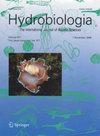Production of clone polyps of the model organism Exaiptasia diaphana (Rapp, 1829)
IF 0.3
4区 生物学
Q4 MARINE & FRESHWATER BIOLOGY
引用次数: 0
Abstract
Background. The sea anemone Exaiptasia diaphana (Order Actiniaria) is an ideal model organism to study diverse biological, physiological, and immune processes in corals (Order Scleractinia) due to its close phyletic relationship and shared traits. E. diaphana is widely distributed along the world’s tropical coastal areas. This species is easy to grow in aquariums under diverse experimental conditions since reproduces asexually and can be rendered aposymbiotic. However, there are a variety of methods to propagate them, making difficult comparisons of results. A standardized propagation protocol for E. diaphana can also contribute to improving the understanding of its biology. Goal. Determine the most rapid method of clonal production in controlled conditions. Results. In the micro-laceration treatment, 50% of the remnant tissue gave rise to a new clonal polyp, while all the amputated anemones resulted in two polyps with tentacles and a pedal disc. Amputated clonal polyps developed their tentacles from the third day, being this treatment the most rapid compared with the control group and the micro-laceration treatment. In both cases, the tentacles started to develop from the sixth day of the experiment. The control group naturally released five clonal polyps with tentacles in the ten-day experiment Conclusion. Transversal amputation was the most rapid method to obtain developed clonal polyps. We, therefore, propose transversal amputation as a standard method for the efficient artificial propagation of the clonal polyps of the model organism E. diaphana.模式生物diaphana Exaiptasia克隆息肉的生产(Rapp, 1829)
背景。海葵Exaiptasia diaphana (Actiniaria目)是研究珊瑚(sccleractinia目)中各种生物、生理和免疫过程的理想模式生物,因为它具有密切的亲缘关系和共同的性状。E. diaphana广泛分布在世界热带沿海地区。由于无性繁殖,该物种很容易在各种实验条件下在水族箱中生长,并且可以呈现异共生。然而,有各种各样的方法来传播它们,使结果难以比较。一个标准化的繁殖方案也有助于提高对其生物学的认识。的目标。确定在受控条件下最快速的克隆生产方法。结果。在微裂伤处理中,50%的残余组织产生了一个新的克隆性息肉,而所有切除的海葵都产生了两个带触角和一个足盘的息肉。切除的克隆性息肉从第3天开始发育触手,与对照组和微裂伤治疗相比,该治疗速度最快。在这两种情况下,触角从实验的第六天开始发育。对照组在10 d内自然释放5只带触角的克隆性息肉。横向截肢是获得发育成熟的克隆性息肉最快速的方法。因此,我们提出横向截肢作为有效人工繁殖模式生物E. diaphana克隆息肉的标准方法。
本文章由计算机程序翻译,如有差异,请以英文原文为准。
求助全文
约1分钟内获得全文
求助全文
来源期刊

Hidrobiologica
生物-海洋与淡水生物学
CiteScore
0.40
自引率
0.00%
发文量
8
审稿时长
>12 weeks
期刊介绍:
HIDROBIOLÓGICA es una publicación cuatrimestral que difunde trabajos originales e inéditos de investigación o revisión, sobre temas relacionados con los organismos y la hidrología de los ambientes acuáticos, dulces y marinos y va dirigida a investigadores de todo el mundo, interesados en las diversas disciplinas que incluye la Hidrobiología , así como a alumnos de posgrados y licenciaturas relacionados con la biología, ecología, taxonomía, filogenia y evolución de organismos acuáticos, e hidrología y oceanografía de ambientes s dulceacuícolas y marinos.
 求助内容:
求助内容: 应助结果提醒方式:
应助结果提醒方式:


